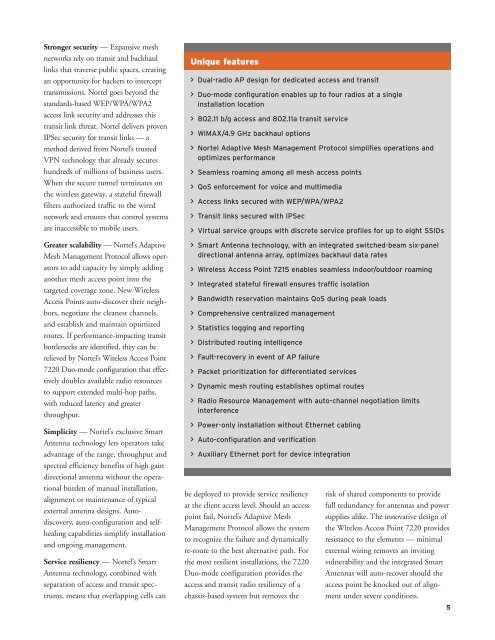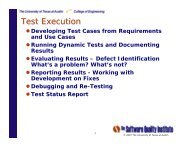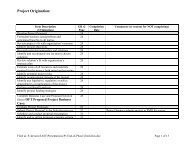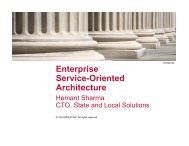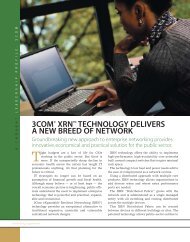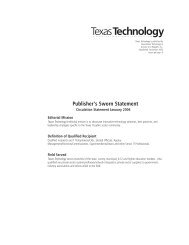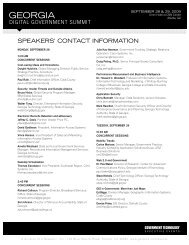Nortel Wireless Mesh Network - 1st Computer Networks
Nortel Wireless Mesh Network - 1st Computer Networks
Nortel Wireless Mesh Network - 1st Computer Networks
Create successful ePaper yourself
Turn your PDF publications into a flip-book with our unique Google optimized e-Paper software.
Stronger security — Expansive mesh<br />
networks rely on transit and backhaul<br />
links that traverse public spaces, creating<br />
an opportunity for hackers to intercept<br />
transmissions. <strong>Nortel</strong> goes beyond the<br />
standards-based WEP/WPA/WPA2<br />
access link security and addresses this<br />
transit link threat. <strong>Nortel</strong> delivers proven<br />
IPSec security for transit links — a<br />
method derived from <strong>Nortel</strong>’s trusted<br />
VPN technology that already secures<br />
hundreds of millions of business users.<br />
When the secure tunnel terminates on<br />
the wireless gateway, a stateful firewall<br />
filters authorized traffic to the wired<br />
network and ensures that control systems<br />
are inaccessible to mobile users.<br />
Greater scalability — <strong>Nortel</strong>’s Adaptive<br />
<strong>Mesh</strong> Management Protocol allows operators<br />
to add capacity by simply adding<br />
another mesh access point into the<br />
targeted coverage zone. New <strong>Wireless</strong><br />
Access Points auto-discover their neighbors,<br />
negotiate the cleanest channels,<br />
and establish and maintain optimized<br />
routes. If performance-impacting transit<br />
bottlenecks are identified, they can be<br />
relieved by <strong>Nortel</strong>’s <strong>Wireless</strong> Access Point<br />
7220 Duo-mode configuration that effectively<br />
doubles available radio resources<br />
to support extended multi-hop paths,<br />
with reduced latency and greater<br />
throughput.<br />
Simplicity — <strong>Nortel</strong>’s exclusive Smart<br />
Antenna technology lets operators take<br />
advantage of the range, throughput and<br />
spectral efficiency benefits of high gain<br />
directional antenna without the operational<br />
burden of manual installation,<br />
alignment or maintenance of typical<br />
external antenna designs. Autodiscovery,<br />
auto-configuration and selfhealing<br />
capabilities simplify installation<br />
and ongoing management.<br />
Service resiliency — <strong>Nortel</strong>’s Smart<br />
Antenna technology, combined with<br />
separation of access and transit spectrums,<br />
means that overlapping cells can<br />
Unique features<br />
> Dual-radio AP design for dedicated access and transit<br />
> Duo-mode configuration enables up to four radios at a single<br />
installation location<br />
> 802.11 b/g access and 802.11a transit service<br />
> WiMAX/4.9 GHz backhaul options<br />
> <strong>Nortel</strong> Adaptive <strong>Mesh</strong> Management Protocol simplifies operations and<br />
optimizes performance<br />
> Seamless roaming among all mesh access points<br />
> QoS enforcement for voice and multimedia<br />
> Access links secured with WEP/WPA/WPA2<br />
> Transit links secured with IPSec<br />
> Virtual service groups with discrete service profiles for up to eight SSIDs<br />
> Smart Antenna technology, with an integrated switched-beam six-panel<br />
directional antenna array, optimizes backhaul data rates<br />
> <strong>Wireless</strong> Access Point 7215 enables seamless indoor/outdoor roaming<br />
> Integrated stateful firewall ensures traffic isolation<br />
> Bandwidth reservation maintains QoS during peak loads<br />
> Comprehensive centralized management<br />
> Statistics logging and reporting<br />
> Distributed routing intelligence<br />
> Fault-recovery in event of AP failure<br />
> Packet prioritization for differentiated services<br />
> Dynamic mesh routing establishes optimal routes<br />
> Radio Resource Management with auto-channel negotiation limits<br />
interference<br />
> Power-only installation without Ethernet cabling<br />
> Auto-configuration and verification<br />
> Auxiliary Ethernet port for device integration<br />
be deployed to provide service resiliency<br />
at the client access level. Should an access<br />
point fail, <strong>Nortel</strong>’s Adaptive <strong>Mesh</strong><br />
Management Protocol allows the system<br />
to recognize the failure and dynamically<br />
re-route to the best alternative path. For<br />
the most resilient installations, the 7220<br />
Duo-mode configuration provides the<br />
access and transit radio resiliency of a<br />
chassis-based system but removes the<br />
risk of shared components to provide<br />
full redundancy for antennas and power<br />
supplies alike. The innovative design of<br />
the <strong>Wireless</strong> Access Point 7220 provides<br />
resistance to the elements — minimal<br />
external wiring removes an inviting<br />
vulnerability and the integrated Smart<br />
Antennas will auto-recover should the<br />
access point be knocked out of alignment<br />
under severe conditions.<br />
5


